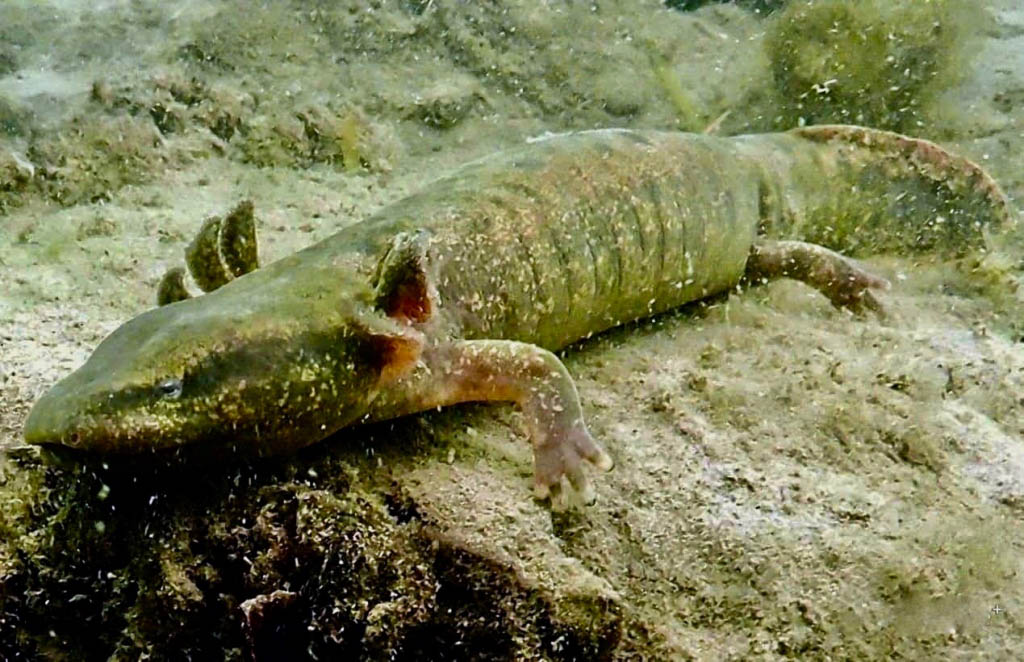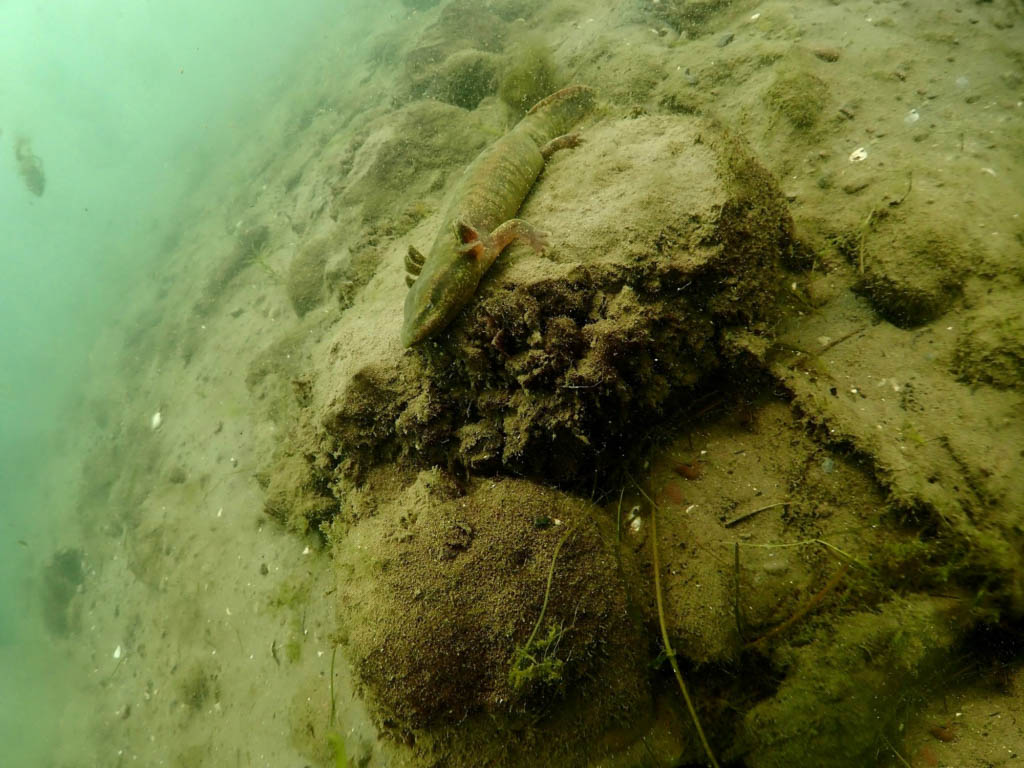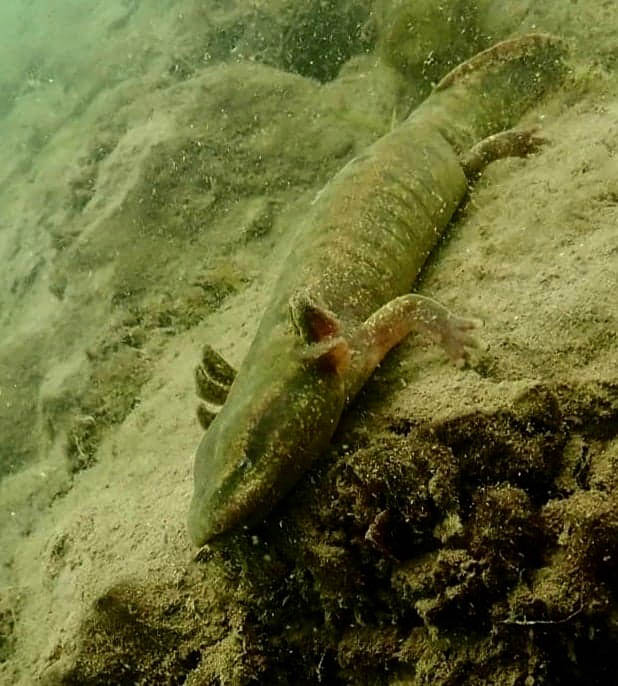“”Ever wonder what else comes out at night in our lakes and rivers?
Night diving in Lower Niagara river at Navy Hall allows us to photograph the Carnivorous Necturus Maculosus aka mud puppy/mud pout. During the day they hide under rocks and such. They eat worms, but little toes in the water could get nibbled on too!””
Jimmy Lockard
The common mud puppy is a salamander in the Proteidae family. It spends its entire life in lakes, rivers, and ponds throughout North America. It undergoes paedomorphosis (retention of juvenile characters into adulthood) and keeps its external gills. Because skin and lung respiration alone are insufficient for gas exchange, the common mud puppy is forced to rely on external gills as its primary means of gas exchange. It is typically rusty brown in colour and can reach a total length (including tail) of 13in (330 mm). It is a nocturnal creature that only comes out during the day if the water in which it lives is murky. When lakes freeze, mud puppies can even live beneath the ice. It eats almost anything it can get its hands on, including insects, mollusks, and earthworms (along with other annelids).
The common mud puppy is rusty brown with grey and black spots and usually has blackish-blue spots, but albino adults have been reported in Arkansas USA. In clear, light water, their skin darkens, while in darker water, their skin lightens.
It takes six years for mud puppies to reach sexual maturity. Mating occurs in the autumn, but eggs are not laid until much later. Males’ cloacae swell when they are ready to breed. Males deposit their spermatophores in the environment’s substratum. The female will then collect them with her cloaca and deposit them in a small specialized gland called a spermatheca until the eggs are fertilized. Females store sperm until ovulation and internal fertilization occur, which occurs usually just before deposition in the spring. Male mud puppies leave the nest before the eggs are laid. When the eggs are ready, the female places them in a safe place, usually on the underside of a rock or log. They can lay anywhere from 20 to 200 eggs, with an average of 60. The eggs are unpigmented and measure approximately 5-6 mm (0.20-0.24 in) in diameter. During the incubation period (around 40 days), the female remains with her eggs. Hatchlings are approximately 2.5 cm (0.98 in) long and grow to 3.6 cm (1.4 in) before the yolk is consumed completely.
Thanks Jimmy Lockard for the Quote and Pictures. Pictures taken three years ago during a night dive at Lower Navy Hall on the Lower Niagara River.
Follow Jimmy’s Dive Adventures on Facebook









